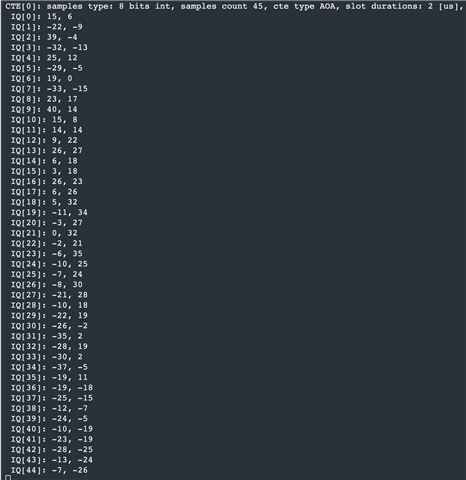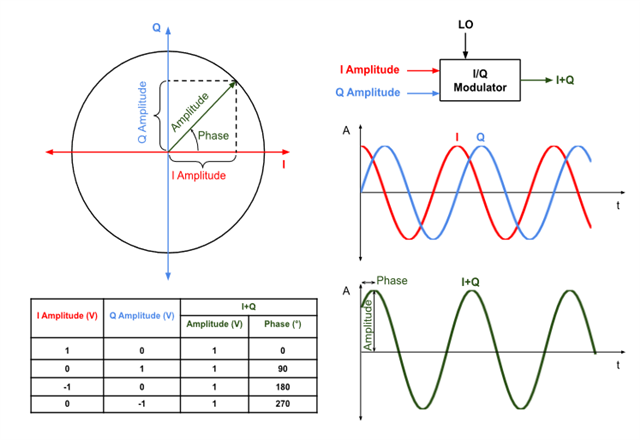Hi,
I have run up the connectionless rx aoa sample based on NCS2.1.2. and get the cte IQ samples. just as below:

as the white paper's guidance. the pre-8samples is reference samples. and from the index of 8, IQ sampled each 4us. totally 160us for 45samples. it's seems to normally runed.
but as my understanding about the samples above, from the index of 8. the IQ sampled according antten's switchpattern. and loop from switchpattern[2] to swichpattern[9]. there are 10 antennas and petterns I used.
that means
IQ[8]----switchpettern[2]
IQ[9]----switchpettern[3]
IQ[10]----switchpettern[4]
.......
IQ[15]----switchpettern[9]
IQ[16]----switchpettern[2]
IQ[17]----switchpettern[3]
.......
IQ[23]----switchpettern[9]
........
thus, the phase diff between(IQ[8] and IQ[9]) should equal with (IQ[16] and IQ[17]). I am wonder if i got the right understanding?
the phase for each IQ sample is. p = atan2(Q/I), (is this correct or not).
beside. the IQ samples's amptitude for each should be the same. ( I[i]*I[i] +Q[i]*Q[i]) =. (I[j]*I[j]+Q[j]*Q[j]). but the samples I got above does not satisfy this form. why and how to understanding it.?
rgds



